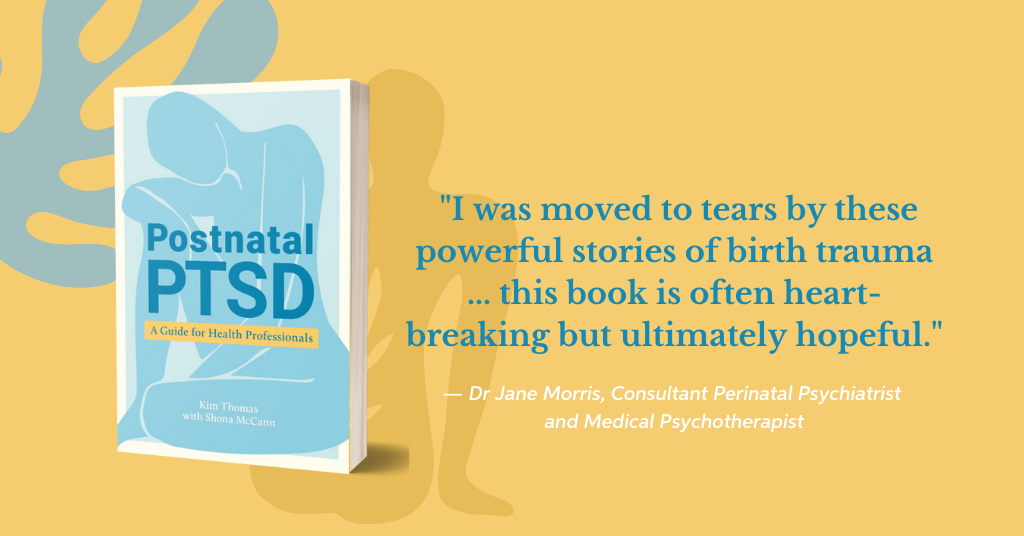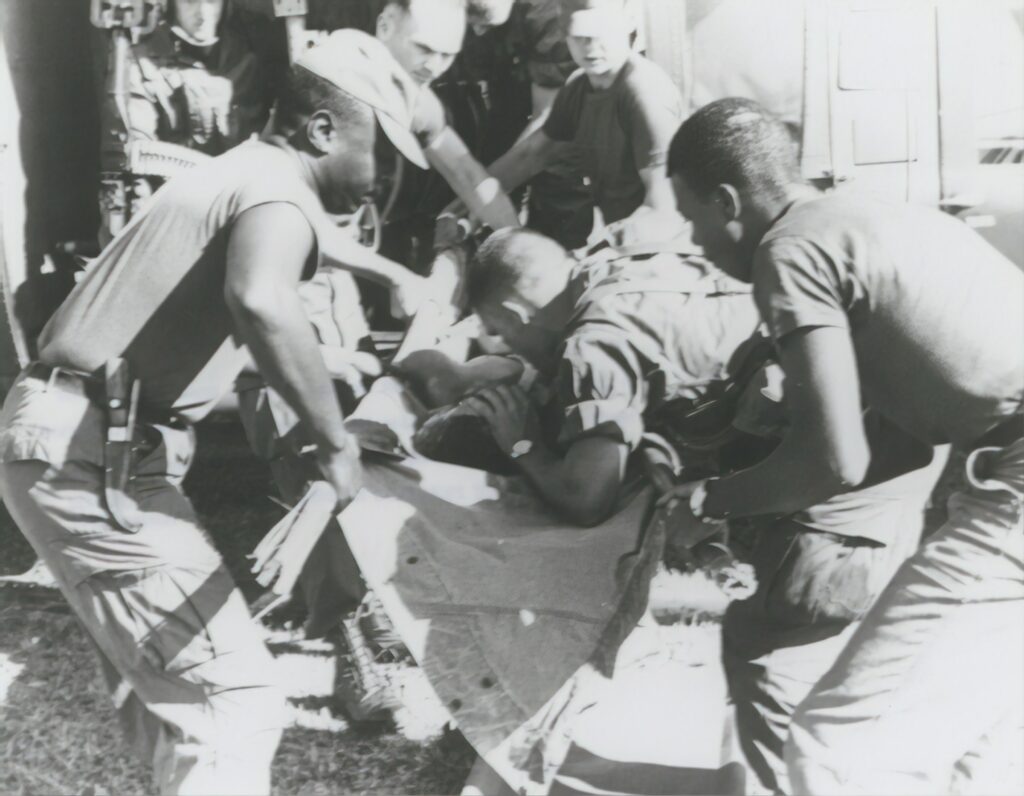
Giving Birth – A Neglected Cause of PTSD
Kim Thomas is a journalist and CEO of the Birth Trauma Association. Her new book is called Postnatal PTSD – a Guide for Health Professionals. In this blogpost, she looks at why giving birth is one of the most common causes of PTSD.
What do we typically associate with PTSD?
If I asked you to picture someone with post-traumatic stress disorder (PTSD), the chances are that the image that comes to mind is of a returning soldier, profoundly traumatised by the horrors of war. The reason most of us have the same mental image is that the condition was first identified in Vietnam veterans in the 1970s, many of whom reported a set of debilitating psychological symptoms such as flashbacks and extreme anxiety. Their campaign to have their condition taken seriously led to PTSD making its first appearance in the psychiatric bible, the Diagnostic and Statistical Manual of Mental Disorders (DSM), in 1980.

“We now know that the vast majority of people with PTSD haven’t been near a war.”
Soldiers in the Vietnam War, Photo by The New York Public Library on Unsplash
Yet we now know that the vast majority of people with PTSD haven’t been near a war. The condition can develop in anyone who’s been through a traumatic experience, whether that’s a car accident, a terrorist attack or sexual assault. The key element that leads to PTSD is that during the traumatic event you have felt intense fear, helplessness or horror. Your fight-or-flight response is activated, but when the traumatic event is over, the fight-or-flight response remains, leading you to feel as if you are still living through the trauma. PTSD can also develop in people who have witnessed someone else’s traumatic experience but haven’t been able to intervene.
Research shows that women are more than twice as likely as men to develop PTSD over the course of their life. What you might find surprising is that one of the biggest causes of PTSD is giving birth.
Olivia’s experience
Take Olivia. A midwife herself, she was overwhelmed with fear when, at 30 weeks of pregnancy, she was diagnosed with placenta accreta, in which the placenta attaches too deeply to the wall of the uterus. When blood started to pour out of her and she was rushed to theatre, she was convinced she was going to die and said goodbye to her husband.
Her baby daughter was born safely, and Olivia survived. But once home, she began hallucinating that blood was running down her legs. She constantly felt angry or upset, and she couldn’t sleep because she was terrified the baby might die. Olivia was experiencing a PTSD symptom known as hypervigilance – a feeling of always being on high alert that something bad is going to happen.
For many years psychologists and psychiatrists were resistant to the idea that a joyful experience such as birth could be traumatising enough to lead to PTSD. As we saw in Olivia’s case, however, the experience isn’t always joyful, but sometimes frightening and psychologically distressing. About 4% of women who give birth go on to develop PTSD – in the UK, that’s about 25,000 women a year.
What can cause a traumatic birth?
Lots of things can go wrong during birth. The baby can die or be born severely injured after being deprived of oxygen. The baby’s shoulder can become stuck behind the mother’s pubic bone on the way out – a dangerous situation, known as shoulder dystocia, that needs emergency intervention. Sometimes women haemorrhage after birth, losing litres of blood. Or they partially retain the placenta, leading to sepsis. Sometimes the baby is born premature and ill, and has to spend time in intensive care.
In all these situations a woman might fear for her own or her baby’s life. Yet the health professionals who look after a woman during this time – midwives, obstetricians, GPs, health visitors – are often unaware of just how traumatised the woman might feel as a result, perhaps because difficult births are a routine event for them. Women with postnatal PTSD become very used to hearing phrases, both from health professionals and from friends and family, such as ‘Just be grateful you have a healthy baby’ or ‘Don’t dwell on what’s happened – it’s time to move on.’
Yet women don’t have conscious control over their symptoms. They might be haunted by flashbacks to the birth, or feel so anxious that they won’t let the baby out of their sight. They might avoid anything that triggers reminders of the birth, such as hospital appointments, tv programmes like Call the Midwife, or even mother-and-baby groups. Relationships with partner, friends and family can deteriorate, leaving women feeling alone and isolated. Sometimes, too, the baby feels like a complete stranger.
The first-hand experience behind Postnatal PTSD
For several years, in my work with the Birth Trauma Association, I’ve heard and read the stories of hundreds of women who have been traumatised by birth. Their stories can be harrowing – but often no one they’ve spoken to has shown any interest in what happened to them. That is why I was delighted when Jessica Kingsley gave me the opportunity to write a book on postnatal PTSD aimed at health professionals.
As well as giving an overview of what postnatal PTSD is and why women develop it, the book includes numerous interviews with women themselves about their own experiences. Perhaps more importantly, it talks about how health professionals can, through their own actions, prevent PTSD, and how they can support women who experience it. My co-author, midwife Shona McCann, runs a clinic for pregnant women who have experienced trauma – and her work, I hope, serves as a model of good practice. We both hope that the book will be a valuable resource for any health professional who works with pregnant and birthing women.
Postnatal PTSD is now available to pre-order.
More resources on Birth Trauma/Postnatal PTSD:
Birth Trauma: Signs, Symptoms, & Treatments